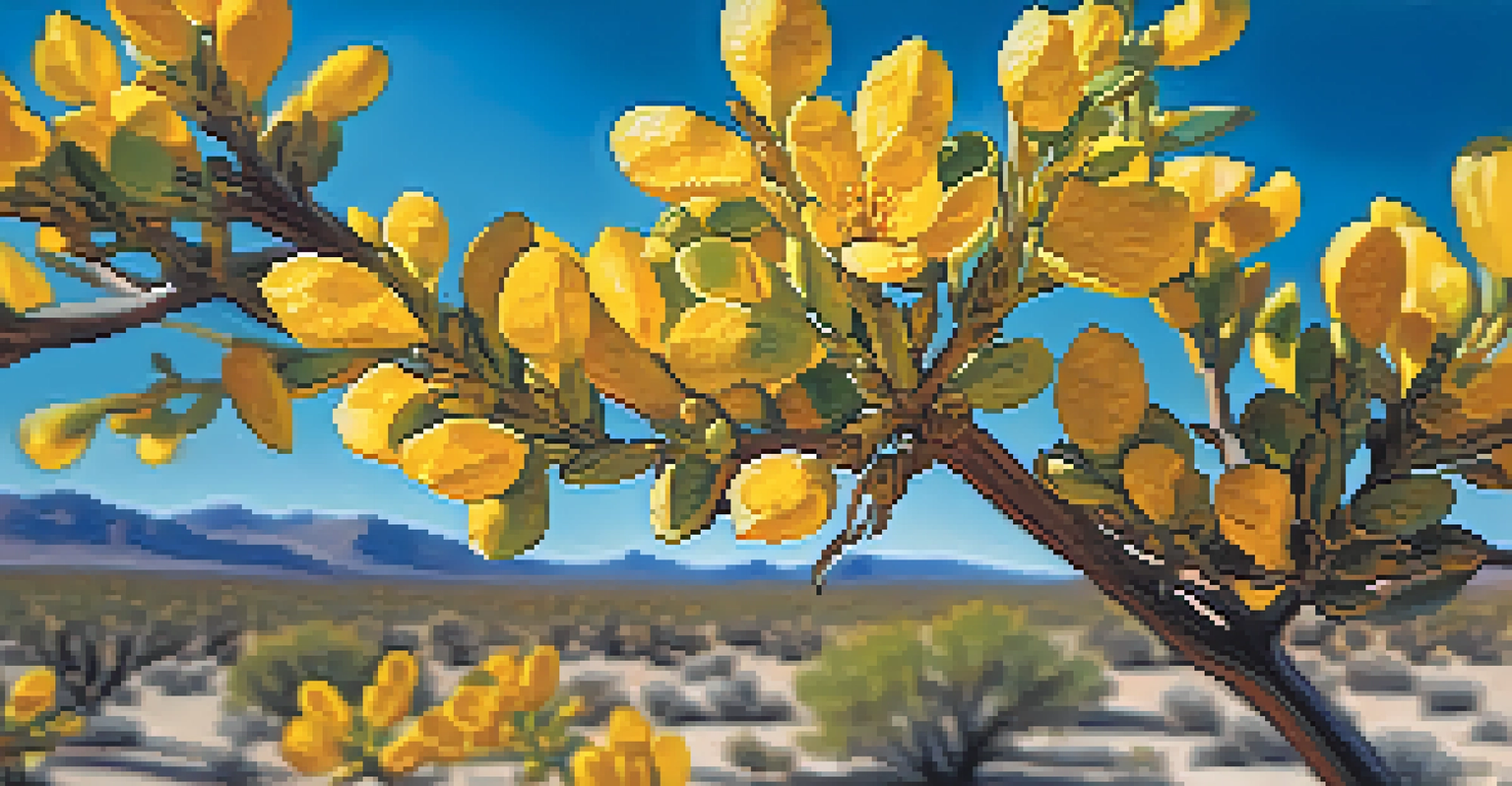How Nevada's Climate Influences Local Flora and Fauna

Nevada's Diverse Climate Zones and Their Impact
Nevada is home to a variety of climate zones, from arid deserts to mountainous regions. This diversity creates unique environments that support different species of flora and fauna. For instance, the Mojave Desert, with its extreme temperatures and low precipitation, is ideal for drought-resistant plants like the Joshua tree.
The environment is where we all meet; where we all have a mutual interest; it is the one thing all of us share.
In contrast, the Sierra Nevada mountains experience significant snowfall and cooler temperatures, allowing for the growth of lush forests. These contrasting climates mean that a wide range of species can thrive in the state, each adapted to their specific environment.
This blend of climates not only influences plant life but also affects animal habitats. Wildlife, such as the desert tortoise in the Mojave and the black bear in the Sierra, have evolved to survive in these specific conditions, showcasing the intricate relationship between climate and biodiversity.
How Temperature Extremes Shape Flora
Nevada experiences some of the highest temperature variations in the United States. With scorching summers and chilly winters, plants must be resilient to survive. For example, the creosote bush has adapted to store water and withstand long periods of drought, a necessity in the desert regions.

These temperature extremes lead to a phenomenon known as 'thermal adaptation,' where plant species develop unique traits to cope with their surroundings. This can include deeper root systems to access underground water or waxy coatings on leaves to minimize moisture loss.
Diverse Climate Shapes Unique Life
Nevada's varied climate zones foster a rich biodiversity, with distinct species adapted to each environment.
As we delve deeper into the state's ecosystems, it's clear that the flora has not only adapted to survive but has also shaped the local landscape. The presence of certain plants can influence soil quality and community structure, affecting everything from insect populations to larger mammals.
The Role of Precipitation in Biodiversity
Precipitation patterns in Nevada are crucial for determining which species can thrive. Most of the state receives less than ten inches of rain annually, making water a precious resource. Areas like the Great Basin receive slightly more rainfall, allowing for a greater diversity of plant life.
In nature's economy, the currency is not money, it is life.
Plants such as sagebrush are common in the drier areas, while more moisture-rich regions can support lush meadows and wetlands. This variance creates a mosaic of habitats that sustain different wildlife populations, from grazing animals to a myriad of bird species.
Moreover, seasonal rains can trigger blooming events, where dormant seeds sprout and transform the landscape. These vibrant wildflower displays not only enhance the beauty of the region but also provide food and habitat for various insects and animals.
Unique Adaptations of Desert Flora
Desert plants in Nevada have developed remarkable adaptations to survive harsh conditions. Many, like cacti, have evolved to store water, while others possess spines to deter herbivores. These adaptations are essential for their survival in an environment where water is scarce.
Additionally, some desert plants have deep taproots that reach underground aquifers, allowing them to access moisture far below the surface. Others employ a technique called 'crassulacean acid metabolism' (CAM), where they open their stomata at night to minimize water loss during the day.
Temperature Extremes Foster Adaptation
Extreme temperature variations in Nevada force plants to develop unique adaptations for survival.
These clever adaptations not only ensure the survival of desert flora but also create a unique ecosystem that supports various animal species. Insects and birds often rely on these plants for food, demonstrating the interconnectedness of life in Nevada's desert.
The Influence of Elevation on Ecosystems
Nevada's varied elevation ranges from low deserts to high mountain ranges, creating distinct ecological zones. As elevation increases, temperatures drop, and precipitation patterns change, leading to different plant and animal communities. For example, the higher elevations of the Ruby Mountains support coniferous forests, while lower areas are dominated by sagebrush.
This transition zone showcases a fascinating blend of species, where flora and fauna must adapt to changing conditions. Animals such as mountain goats and bighorn sheep thrive in the rugged terrain, while the valleys below support a different set of wildlife.
Understanding how elevation impacts ecosystems is essential for conservation efforts. Protecting these diverse habitats ensures that both flora and fauna can continue to flourish amidst climate changes.
Climate Change and Its Effects on Local Species
As climate change continues to impact the planet, Nevada's unique ecosystems are not immune. Rising temperatures and changing precipitation patterns pose significant challenges for local flora and fauna. Species that are already adapted to specific conditions may find it difficult to cope with the rapid changes.
For instance, some plants may struggle to reproduce if their flowering times no longer align with pollinator activity due to temperature shifts. Similarly, animals that rely on seasonal cues for migration and mating may face challenges as their environments change.
Conservation is Key for Biodiversity
Ongoing conservation efforts in Nevada are essential to protect its diverse ecosystems from climate change impacts.
Conservationists are now focusing on climate resilience strategies to help species adapt. This includes habitat restoration and creating wildlife corridors that allow animals to move in response to changing conditions, ensuring the survival of Nevada's diverse ecosystems.
Conservation Efforts for Nevada's Ecosystems
Conservation efforts in Nevada are crucial for preserving its unique biodiversity in the face of climate change. Organizations are working tirelessly to protect critical habitats and promote sustainable practices to mitigate human impact. These initiatives range from habitat restoration projects to educational programs that raise awareness about local wildlife.
Collaboration with local communities plays a vital role in these efforts. By engaging residents and stakeholders, conservationists can create a shared vision for protecting Nevada's natural resources. This grassroots approach ensures that everyone has a stake in preserving the state's rich ecological heritage.

Ultimately, protecting Nevada's flora and fauna requires a multifaceted approach that addresses both environmental and social factors. By prioritizing conservation, we can help ensure that future generations will appreciate the beauty and diversity of Nevada's ecosystems.